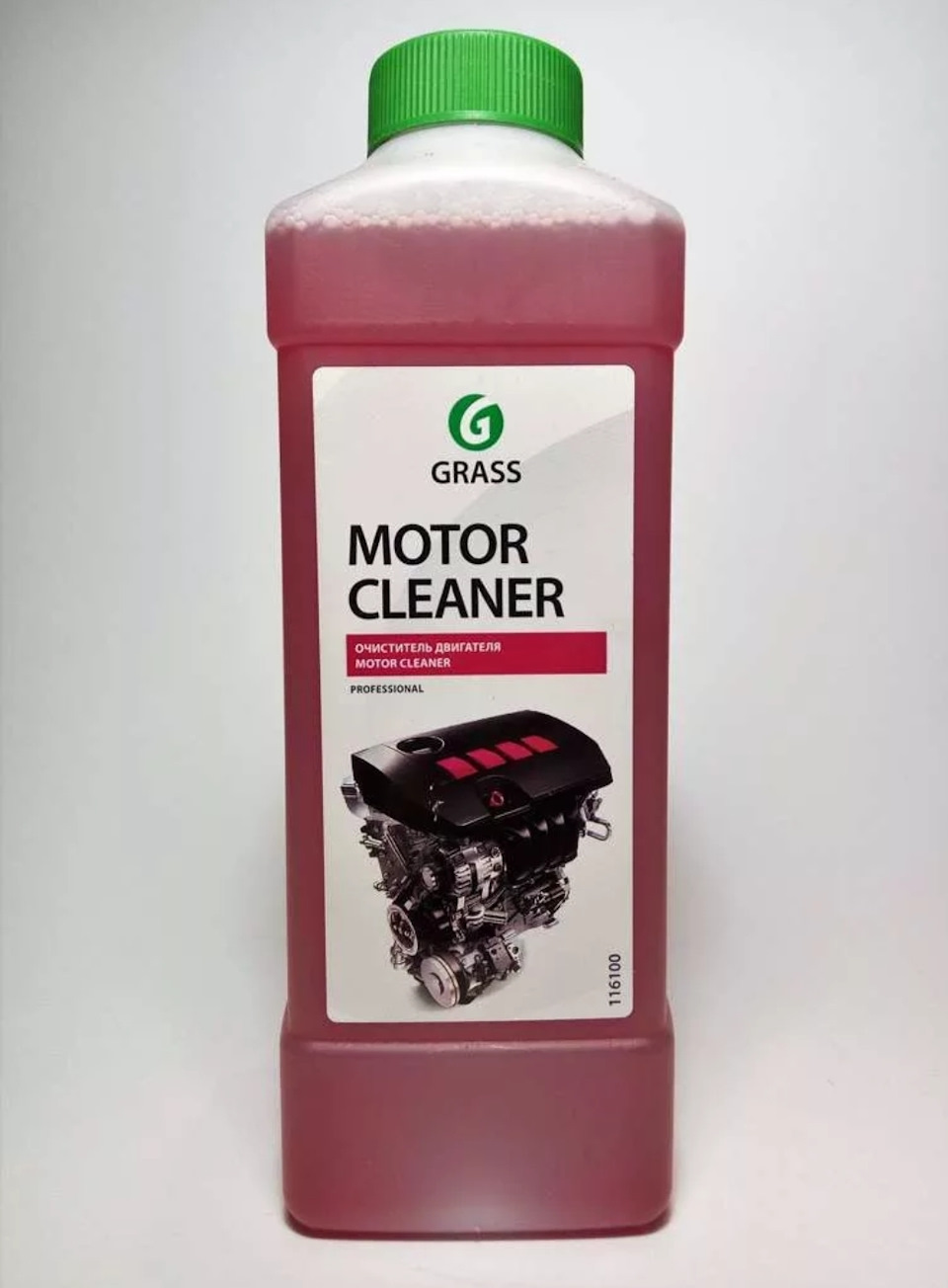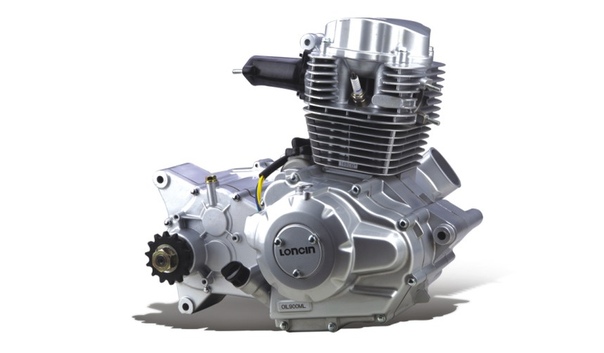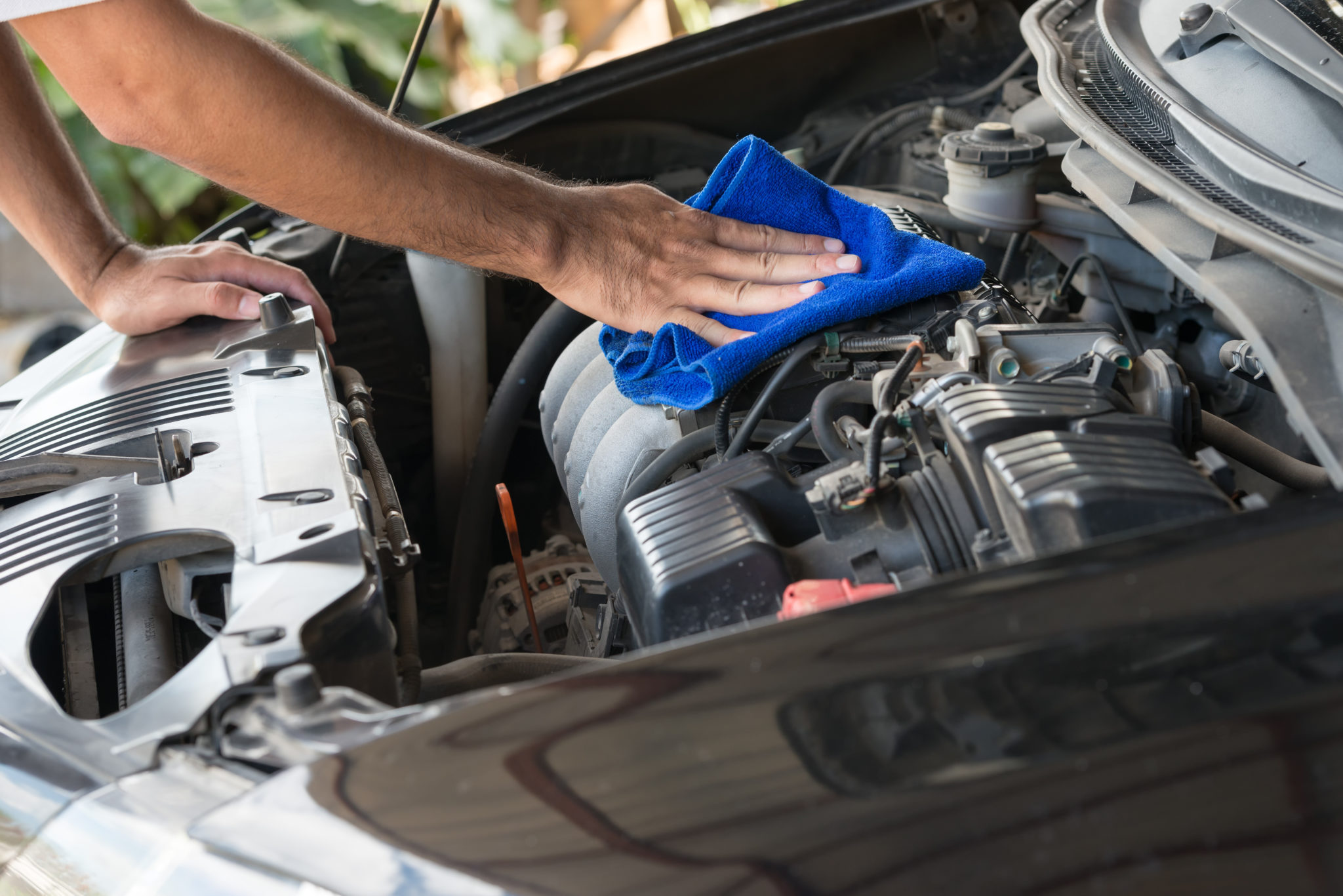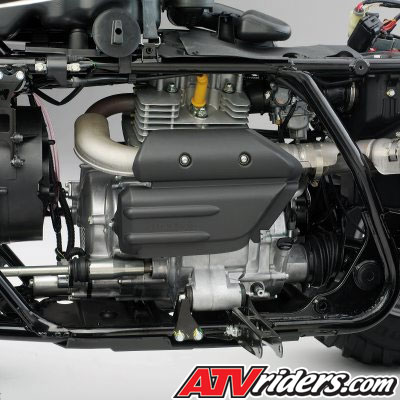David Borgogni
Passioante Adrenaline Chaser at ATV Guyde
David has years of experience working as a copywriter but loves spending his free time riding ATVs. His passion in life lies in sharing information about ATVs with those who are looking to pursue their passion for riding. He knows how frustrating it can be to not understand where to get started with an ATV journey, which is why he’s sharing all of tips, tricks, and reviews with you here.
Latest posts by David Borgogni (see all)
A utility or sports quad can last for more than a decade, but only if it’s frequently serviced. That’s why it’s important to know how to clean an ATV engine since failing to do so can shorten the vehicle’s lifespan.
It is important to distinguish between the cleaning of external and internal parts of the engine, as these are two very different processes. However, I don’t recommend cleaning the internal parts of your ATV’s engine before consulting with your mechanic.
On the other hand, cleaning the engine’s exterior is a straightforward process that doesn’t take too much time or effort. So, in this article, I am going to show you how to clean an ATV engine and recommend several products you can use to remove different types of dirt.
Go through our guide to the best ATVs to learn more about the best models on the market.
A simple visual inspection should be enough to determine if your ATV’s engine needs cleaning. Mud and dust accumulation will change the color of the engine’s exterior so that a dirty engine will have a brownish color instead of silver metallic.
Most engine blocks are made of cast aluminum, so the product you choose to clean a cast-aluminum engine mustn’t have corrosive properties. Scratching this material is relatively easy, and you shouldn’t use hard brushes during the cleaning process as they might scratch the engine’s surface.
You will notice a broad spectrum of symptoms that range from improper heat disposal to lower fuel mileage if the internal components of ATV’s engine are dirty. You shouldn’t ignore the vehicle’s engine power and performance loss, as failing to address these issues can damage the engine permanently.
You shouldn’t ignore the vehicle’s engine power and performance loss, as failing to address these issues can damage the engine permanently.
Go through our guide to ATV replacement parts if you need to replace one or more of your quad’s original components.
Hiring a mechanic to clean an ATV’s engine can cost more than $700, which is the reason why some quad owners prefer to go through this process alone. Dirty engine oil is one of the most obvious signs that the engine needs cleaning.
Also, you have to check if the air filter is dirty to ensure that the air that goes into the engine doesn’t contain pollutants. Oil for ATV engines contains cleaning detergents that dissolve sludge and carbon buildup generated by fuel combustion.
Nonetheless, frequent oil changes are sometimes not enough to remove carbon deposits from the engine. Aside from changing the air filter and the engine oil, you can also use motor treatment products to clean the interior of an ATV engine. Here’s how you can use oil additives to get rid of carbon deposits.
Here’s how you can use oil additives to get rid of carbon deposits.

You should replace the air filter every time you add new oil to the engine, usually after 300 miles. Nonetheless, it is advisable to check if the air filter is clean whenever you ride your ATV through mud, sand, or other types of challenging terrains.
Read our guide to the best ATV gear if you need riding equipment or ATV clothing.
Besides motor treatment, you can also use engine flush products to break up carbon deposits and flush them out of the system.
The application method depends on the product you decide to use, but in most cases, you’ll have to add a small amount of this fluid to the engine oil and then let the engine run for a while before removing the old oil from the engine.
These products can damage engine seals and cause oil leaks, so you shouldn’t use them before consulting a mechanic. In most cases, it is easier to remove the engine from the vehicle, clean it thoroughly, and put it back on than risking damaging it with strong chemicals.
Go through our guide to the best ATV tires for snow if you’re planning to use your ATV during the winter season.
Unlike the process of cleaning the engine interior, cleaning the exterior of an ATV engine doesn’t require any technical knowledge. You need to know which cleaning product to use and then apply it to the parts of the engine you want to clean.
The cleaner you choose should be able to degrease a surface and remove grime without facilitating corrosion. Most products recommended for cleaning ATV engines contain an acid-based formula that decomposes the dirt and allows you to wash it away.
ATV engines usually get dirty because of prolonged mud and dust exposure, which is the reason why they require cleaning every once in a while. Let’s go through the steps you need to take to clean an ATV engine.
Let’s go through the steps you need to take to clean an ATV engine.

You will have to take out the engine if the cleaner you chose fails to restore the engine’s exterior to its original state and use a power tool to scrape the dirt and rust off the engine. It isn’t advisable to do this on your own if you don’t have the necessary experience to complete the task.
Check out our guide to the best GPS for ATV trail riding if you’re looking for a way to upgrade your quad’s navigation system.
The search for products you can use to clean the exterior of an ATV engine can be confusing since cleaners, aluminum brighteners, and degreasers aren’t produced solely for this purpose.
Hence, in most cases, you’ll be looking for an aluminum wheel cleaner or an automotive aluminum cleaner instead of a product designed specifically for cleaning ATV engines. Although vinegar can remove grime from the engine’s surface, you shouldn’t use it because it may cause corrosion.
Motor treatment products that allow you to remove sludge and carbon deposits from the engine are usually universal, but you still need to check if you can use them to clean the interior of your quad’s engine.
I shortlisted some of the best ATV engine cleaning products, so let’s take a closer look at their features.
ATV owners often opt for the Valvoline Eagle One Mag Cleaner because it is effective and affordable. Although this product is designed primarily for aluminum alloy wheels, you can use it on all aluminum parts of your quad.
The application method is straightforward, as you just have to spray the product over the area you want to clean, leave it for 30 seconds, and then rinse it with water. You can use a soft sponge to scrub persistent dirt, but keep in mind that applying too much pressure may scratch the surface.
Be careful not to apply the cleaner to the parts of the vehicle that contain paint because you might damage it.
You won’t have too much trouble removing mud stains, greasy oil, or dirt from your vehicle’s engine if you get the Purple Power 4319PS Cleaner and Degreaser. The product is remarkably easy to use since you just have to apply to the engine’s exterior and rinse it after 30 to 60 seconds.
The product is remarkably easy to use since you just have to apply to the engine’s exterior and rinse it after 30 to 60 seconds.
This industrial-strength cleaner is biodegradable and doesn’t contain aerosol or phosphate. It is also non-abrasive, so you don’t have to worry about applying it on aluminum alloy surfaces.
It is very important to rinse the product properly since allowing it to rest on an aluminum surface for too long can have unwanted effects.
The Sea Foam SF-16-6PK Motor Treatment can help you restore your quad’s fuel efficiency or acceleration capabilities by decomposing sludge and carbon buildup in the engine.
Even though the manufacturer claims that the product is safe to use with trucks, cars, and ATV engines, you still need to check with your mechanic if it is safe to use it on the quad model you own. This motor treatment is equally effective on diesel and gasoline engines.
The Sea Foam’s product doesn’t contain abrasive chemicals that can damage the engine’s components, and it can help stabilize the engine’s fuel. It also lubricates the engine’s moving parts and prevents corrosion.
It also lubricates the engine’s moving parts and prevents corrosion.
Question: How Often Do I Have to Clean an ATV Engine?
Answer: Changing the oil and air filter every three to six months should keep the engine’s interior clean and eliminate the need to use motor treatment products. Checking if the engine’s exterior is dirty after every ride will enable you to know when is the right moment to clean it.
Question: Where Can I Buy ATV Engine Cleaning Products?
Answer: You can find these products in all auto supply stores or order them online.
Question: Do I Have to Use a Pressure Washer to Rinse an ATV Cleaner?
Answer: You don’t have to use a pressure washer to rinse an ATV cleaner off the vehicle’s engine, but you should keep in mind that you might struggle to remove all dirt with a regular water hose.
On the other hand, a power washer might push the dirt to the areas where you cannot reach them, so the best way to avoid this is to stand a few feet away from the vehicle while washing its motor.
Question: How Much of the Cleaning Product Should I Apply to an ATV Engine?=
Answer: There are no restrictions in terms of the amount of the cleaning product you can apply to an external part of the engine, but you must check how much of the motor treatment product you should add while cleaning the engine’s internal parts.
Cleaning the exterior part of an ATV engine is a routine procedure that doesn’t take more than 20 minutes of your time. You just need to know which cleaner, degreaser, or aluminum brightener to use, then simply apply the product and rinse it with a pressure washer.
The process of removing sludge from gasoline and diesel ATV engines is a bit more complex, and you shouldn’t go through it before consulting a mechanic.
I recommend choosing the Valvoline Eagle One Mag Cleaner if you want to remove mud stains or grime from the engine’s exterior or the Sea Foam SF-16-6PK Motor Treatment for cleaning the engine’s interior components.
I hope that this article has helped you find the best way to clean an ATV engine. Let me know in the comments or continue reading our Honda Pioneer review to learn more about the ATV’s features.
Messy, time consuming manual cleaning MX and ATV quad bike engine, drive and suspension parts is unnecessary when an ultrasonic cleaner replaces scrubbing with solvents in wash tanks. Cycle service shops as well as MX and ATV clubs can put the power of ultrasound to work to speed throughput and preserve investments in off-road sports equipment.
Ultrasonically cleaning MX and ATV bike parts is faster than manual methods for two reasons:

The thoroughness of ultrasonic cleaning is due to what is called cavitation action. This is created by generator-powered transducers bonded to an ultrasonic cleaning tank. Vibrating at frequencies such as 37 kHz, the transducers create billions of microscopic bubbles in the solution. These bubbles violently implode when contacting the parts. The action blasts loose and carries away even the most tenacious contaminants.
Benchtop and floor-mounted industrial ultrasonic cleaners are available in several models, tank sizes and cleaning solution capacities. For purposes of illustration we’ll use the Elmasonic S benchtop models with solution capacities to 28 gallons. Available from Tovatech, these cleaners have several features useful when cleaning MX and ATV quad engine, suspension and drive parts:
Available from Tovatech, these cleaners have several features useful when cleaning MX and ATV quad engine, suspension and drive parts:
An ideal cleaning solution concentrate for cleaning MX and ATV quad engine, suspension and drive parts is mildly alkaline elma tec clean A4 universal ultrasonic degreaser. It is formulated to clean engine parts, gears, bearings, carburetors, fuel injectors and sport and recreation power equipment when diluted with water. A 2.5 liter container makes approximately 15 gallons of solution.
A 2.5 liter container makes approximately 15 gallons of solution.
It’s a good idea to pre-clean grossly contaminated parts – i.e. scrape off heavy carbon buildup, mud and similar contaminants. This helps preserve the useful life of the solution.
Also note that solution will be displaced by parts being cleaned so once the solution is prepared you may have to drain off a quantity and set it aside. When operating, the tank should not be overfilled or under filled. As with all ultrasonic cleaning procedures, practice helps develop the process.

Operational Note: As cleaning proceeds, oils rise to the surface of the solution and should be skimmed off and disposed of properly. On some equipment weirs and filtering units are available to skim and/or trap contaminants to extend solution life. Over time, however, cleaning efficiency will fall off. Drain the tank and clean it according to the user manual.
Dispose of spent solution following local regulations.
For more information please contact the ultrasonic cleaning professionals at Tovatech for advice on equipment and cleaning solution selection based on your operations and requirements.
Unit/system: Engine
Fault: How to properly clean the engine cooling system

At the slightest sign of overheating, you should stop using the car, because. Otherwise, the engine is guaranteed to fail!
Possible consequences of failure to correct
The operation of the engine at elevated temperatures has an extremely negative effect on its resource. Even slight overheating can lead to piston ring sticking, which in turn will lead to loss of compression, increased oil consumption and wear of the CPG*, which will require engine overhaul. In especially severe cases, complete destruction of parts of the CPG * and the cylinder block is possible. Such breakdowns require a complete replacement of the engine
In especially severe cases, complete destruction of parts of the CPG * and the cylinder block is possible. Such breakdowns require a complete replacement of the engine
* Cylinder - piston group
It is necessary to strictly observe the maintenance periods prescribed by the regulations, change the coolant, belts, pumps in time, monitor the tightness and cleanliness of the cooling system.
Cooling circuit cleaner. Effectively dissolves scale and dirt in radiators, pipes and engine water jacket, ensures normal engine temperature and reliable operation. Suitable for all cooling and heating systems. The product does not contain aggressive acids and alkalis. Recommended at every coolant change.
Code: 1994
Volume: 0.3 l

Radiator exterior cleaner. Perfectly cleans the external surfaces of any radiators: cooling system radiator, air conditioner condenser, lubrication system radiator, automatic transmission radiator and others. Perfectly removes all types of heavy soiling such as: dirt, salt, lubricants, grease and traces of insects. Radiators stay clean and protected from corrosion for a long time.
Code: 3959
Volume: 0.5 l
See also:
Severe contamination of the external surfaces of radiators

In case of heavy contamination, it is recommended to repeat the cleaning process. Also, residual dirt can be removed with compressed air. Important: washing the radiator with a strong pressure of water or compressed air is fraught with mechanical damage to the radiator cells. Means is efficient only at positive temperature.
BEFORE
AFTER

During the operation of the car engine, on its valves, the piston crown, on the walls of the combustion chambers and other places, carbon deposits gradually form. It is almost impossible to avoid this process, but, under certain conditions, carbon deposits are formed especially intensively. The reason for this may be the use of low-quality fuel, incorrect carburetor adjustment, poor filtration of air entering the carburetor, engine malfunctions, etc.
Carbon deposits are unburned particles of fuel, dust, or engine oil that have entered the combustion chambers. A particular danger is carbon deposits, which are deposited in the form of a thick layer. The fact is that it has a rather low thermal conductivity, and a thick soot crust can significantly impair the process of removing excess heat from engine parts, thereby disrupting the normal thermal regime of its operation.
In this case, the motor parts begin to wear out much more intensively, which reduces their service life. Also, carbon deposits in the combustion chambers can cause such a dangerous phenomenon for the engine as glow ignition, when the fuel-air mixture ignites not from a spark plug at a given moment, but randomly, from overheated carbon particles, which increases the risk of breakdown engine.
filling it with quality gasoline. When the engine is running in such an intensive mode, carbon deposits will be removed. Of course, it will not be possible to remove large carbon deposits, especially old ones, in this way, and, in this case, you can resort to other methods that do not involve disassembling the engine.
Descaler Solution
One of these methods can be called chemical, and it is desirable to coincide with the cleaning of carbon deposits by this method at the next engine oil change. You need to prepare a solution by mixing two parts of acetone, one part of kerosene and one part of motor oil. This solution is poured into all engine cylinders through the spark plug holes. Next, the spark plugs are installed in place, and the engine crankshaft is rotated several times, for example, using the starting handle. The solution remains in the cylinders for a day, after which the spark plugs are unscrewed, and the engine crankshaft is again turned about 10 times in order to “blow out” the cylinders. After that, the candles are washed with gasoline, dried and installed on the engine. Next, the engine oil in the engine is replaced, as well as the oil filter, in the usual manner, in accordance with the instructions in the car's operating instructions. The car is refueled with quality fuel, and travel at high speed on a good road. Usually, after running the first 100 km, carbon deposits are removed from the engine almost completely. It should be taken into account that in this case the engine oil can be heavily contaminated with soot, and it will be necessary to change it again after a run of 500 km.
You need to prepare a solution by mixing two parts of acetone, one part of kerosene and one part of motor oil. This solution is poured into all engine cylinders through the spark plug holes. Next, the spark plugs are installed in place, and the engine crankshaft is rotated several times, for example, using the starting handle. The solution remains in the cylinders for a day, after which the spark plugs are unscrewed, and the engine crankshaft is again turned about 10 times in order to “blow out” the cylinders. After that, the candles are washed with gasoline, dried and installed on the engine. Next, the engine oil in the engine is replaced, as well as the oil filter, in the usual manner, in accordance with the instructions in the car's operating instructions. The car is refueled with quality fuel, and travel at high speed on a good road. Usually, after running the first 100 km, carbon deposits are removed from the engine almost completely. It should be taken into account that in this case the engine oil can be heavily contaminated with soot, and it will be necessary to change it again after a run of 500 km. since the removal of soot.
since the removal of soot.
Rubber tube method
There are other ways to remove carbon deposits. For example, you need to insert a needle from an injection system into a rubber tube that runs from a vacuum regulator to a carburetor, with a tube from the same system put on it. Dip the other end of this tube into a small container of water. Due to the vacuum formed in the vacuum regulator, water from the tank will be sucked into the carburetor, and along with the fuel mixture will enter the engine cylinders. It is better to do this operation on a running engine so that there are no difficulties with starting it. Water vapor will help soften carbon deposits and quickly remove them from the engine; it is enough to let the engine run for about 10 minutes “on the water”.
Cleaning method with highly effective additives
If you have no time to deal with solutions and use various tubes, you can always use auto chemicals from Germany, in full range, presented on the window of our store http://www.